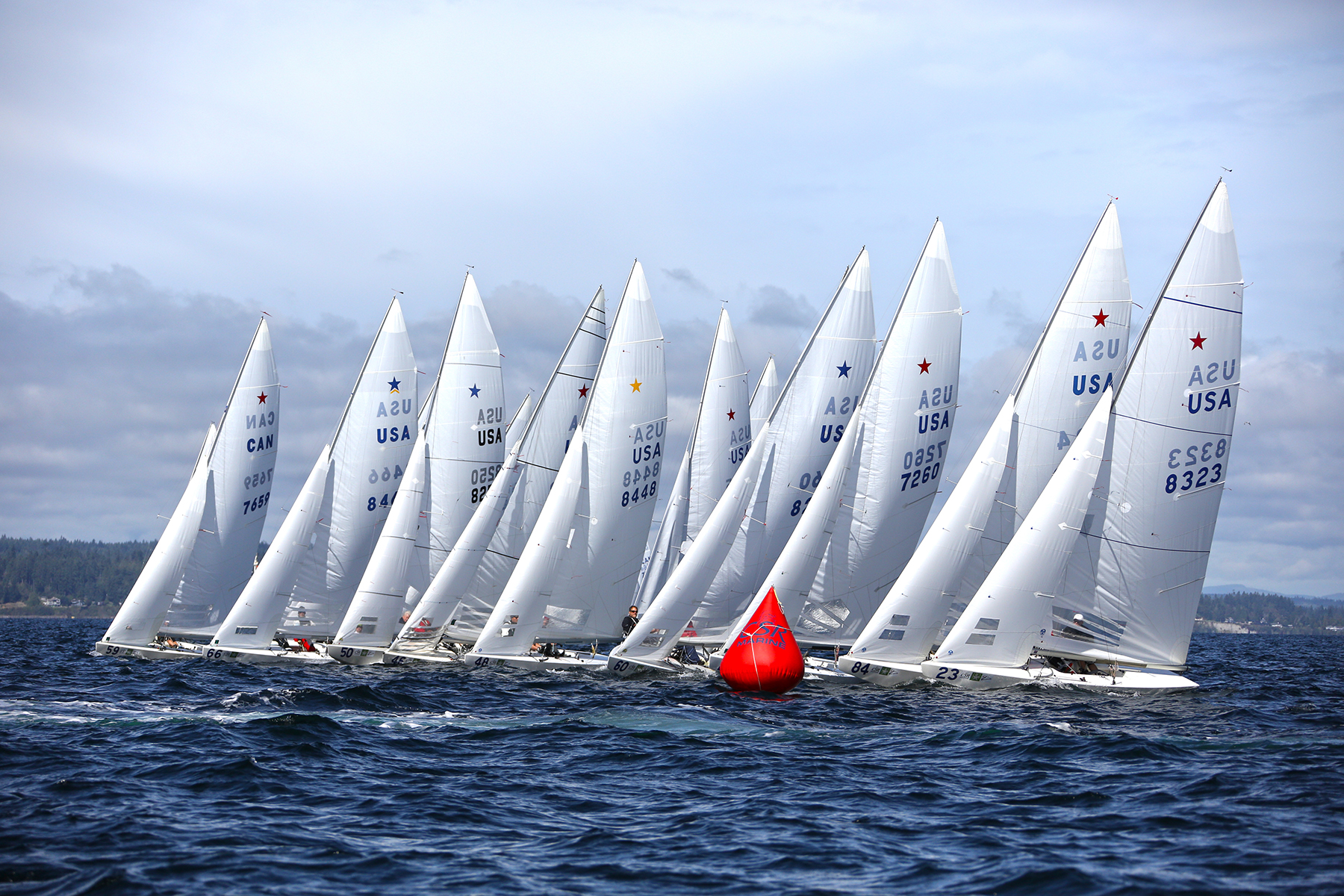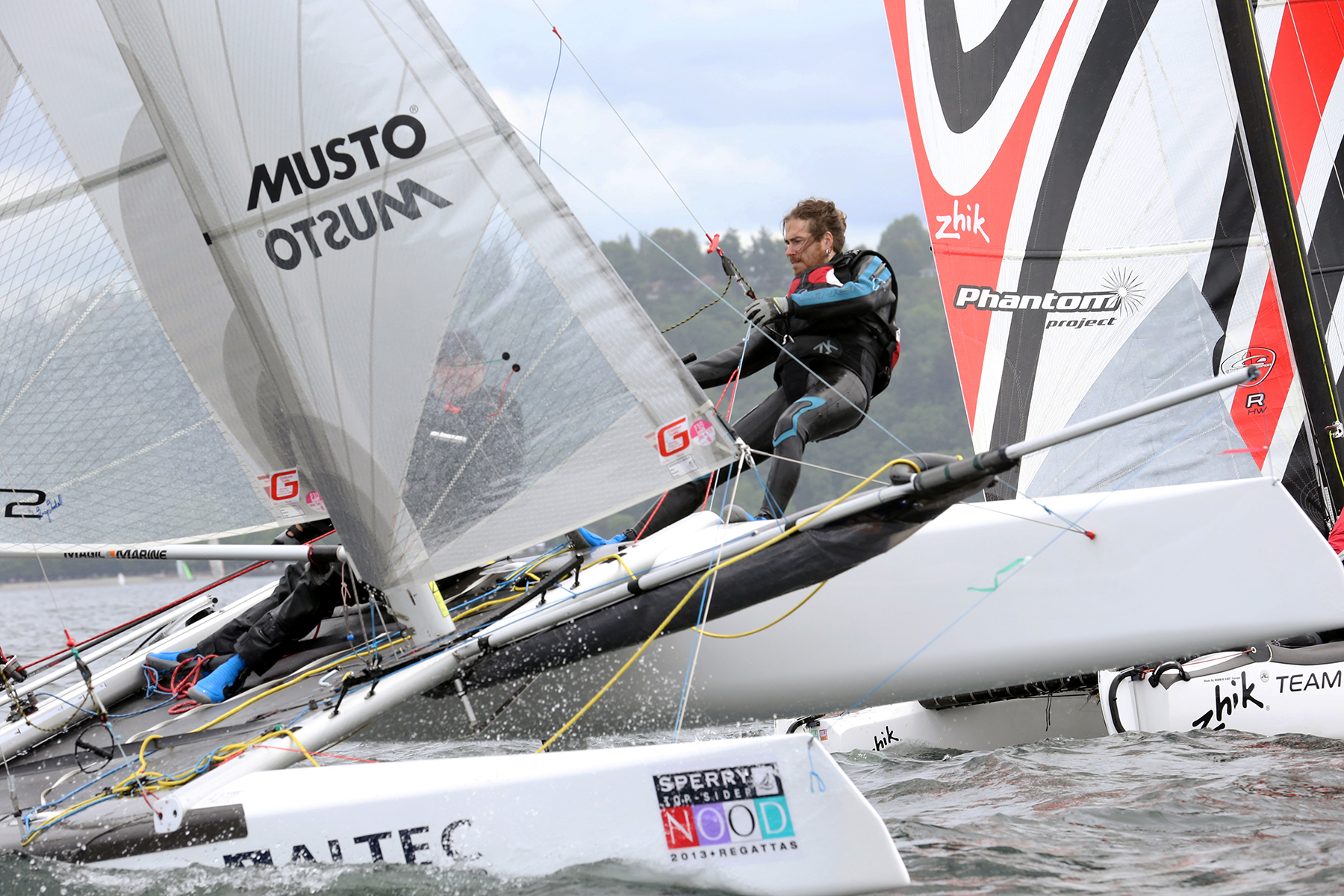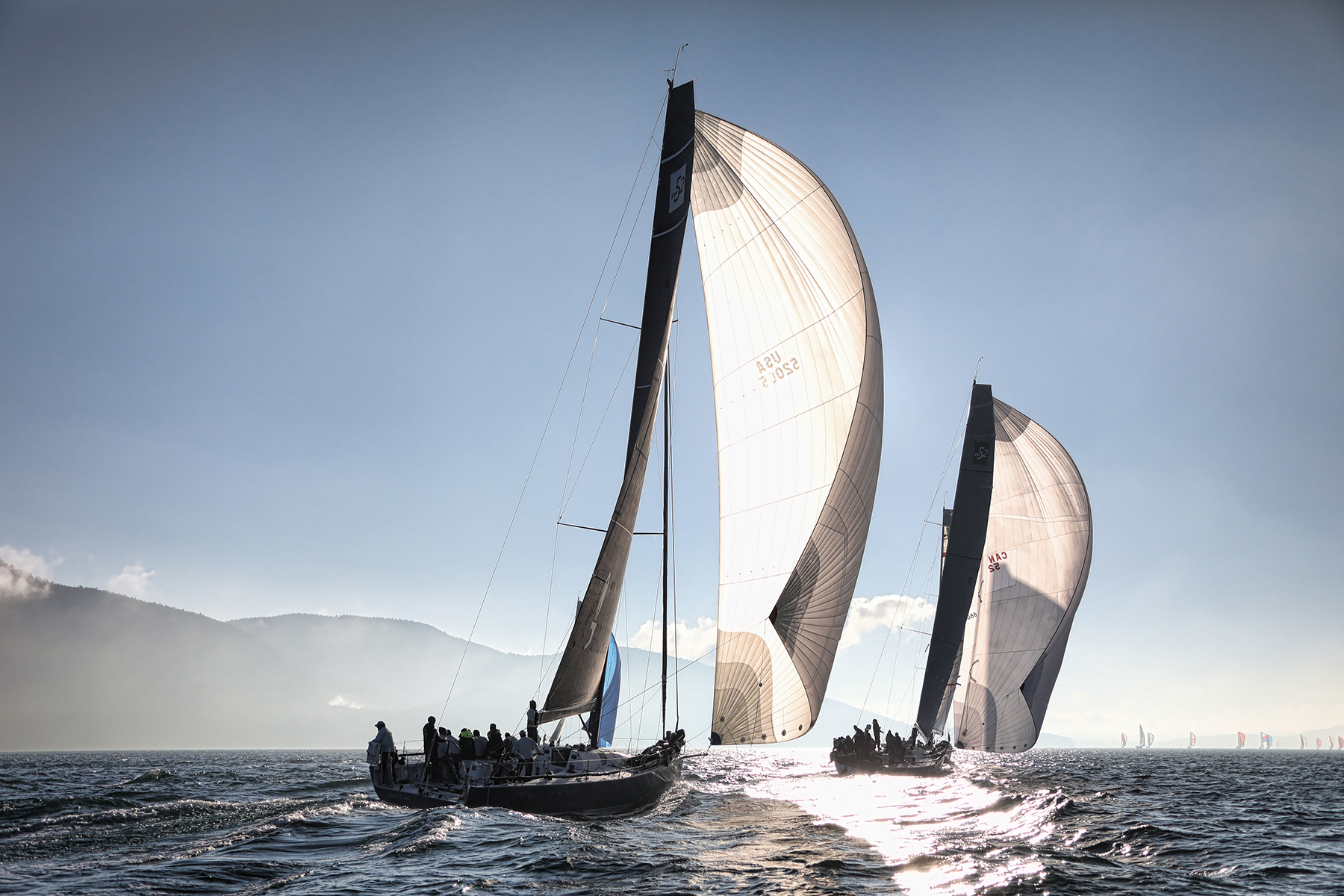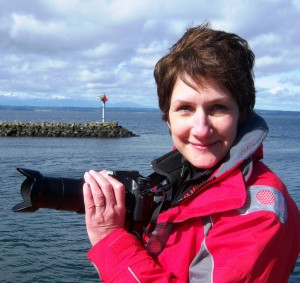


JAN ANDERSON, marine photographer and co-owner of Flagship Maritime Training Center, takes you behind the lens for a snapshot of what it takes to photograph a sailboat race.
How did you first get into marine photography and what drew you to this particular aspect of the field? What do you enjoy most about it?
I met my husband Skip in 2004, and I was neither a sailor nor a photographer. Sailing with him quickly introduced me to the possibility of taking photos on the water. I first started shooting with a cell phone, graduated to a real camera, and then stepped up to the full meal deal. It’s now been 15-plus years and counting. I love being on the water in a wide range of weather conditions, surrounded by our beautiful Pacific Northwest scenery, seeing people enjoying their sport of choice, plus crossing tacks with commercial vessels of all shapes and sizes. It’s all great stuff!
Your race photography is the stuff of local legend. How do you go about photographing a sailboat race? What does it take to get “the shot”, so to speak?
I’m not a racing sailor; my focus is on photography. Skip has been a racing sailor his whole life, but very early in our relationship, he shifted his focus to serve as my boat boy. He and I enjoy a good blend of talents when we’re on the water, and the PhotoBoat, as we call it, can safely get us to where we need to get on the race course in a hurry. We love working together!
Before even getting on the water, we check the weather forecast and the predicted tides and currents for the day. Racing fleets base many of their decisions around the forces of nature versus the course layout, and this helps us decide where to go for the best action. While I do take a great number single-boat portraits (especially if there’s a terrific backdrop, a smiling crew, and/or a gorgeous spinnaker!), I prefer action on crowded starting lines, tight mark roundings, teeth-clenching port/starboard situations, and so forth. Skip’s extensive racing background definitely gives me an edge, putting the PhotoBoat into position to get the very best shots I can, foreseeing well in advance the stuff about to happen, as well as the lighting, weather, etc.
What do you pack on board with you during a race? (We all know that Pacific Northwest weather can be mercurial, as is the sea itself, so curious as to how you prep for the day.)
We have a terrific T-top on the PhotoBoat, which is not so much for sun as for the usual likelihood of rain! Early on, I quickly learned that one, wet lenses don’t work so well; two, bring a towel no matter the forecast; and three, on a wet and really breezy day, position the boat so I’m shooting downwind and somewhat protected by our canvas work. Now, that doesn’t always work for lighting or scenic backdrop, but let’s face it, if we only went out when we had sunshine and blue skies on the horizon, we wouldn’t be as active as we are, and we’d miss out on the beautiful contrasts Mother Nature and happenstance provide. We do also stand by to render assistance to vessels or crew as needed, and it’s typically the gnarliest conditions that produce such situations.
What are a few of your favorite local events to photograph and what makes them special?
I love Round the County for the great scenery and racing, then dinner and shopping on San Juan Island, as well as Swiftsure, with the huge fleets, aggressive starts, and of course, for breakfast in Port Angeles. The buoy racing at Race Week also makes for better shots, start after start, in a terrific venue. Grand Prix is the best of the best; Winter Vashon is our original turf and we always enjoy a warm welcome from old friends. And, finally Race to the Straits has the Whidbey Island backdrop and all the shopping and dining in Port Townsend. That said, though, we enjoy all events, bar none – the different venues, fresh smiles, old friends, new faces, and we look forward to every weekend we spend on the water.
ABOUT THE EXPERT: Skip and I own and operate Flagship Maritime Training Center in Tacoma, which helps professional mariners earn their USCG merchant mariner credentials. Approved by the USCG National Maritime Center, licensed by Washington State as a private vocational school, and with over 2,500 graduates to date, Flagship earned this year’s U.S. Department of Transportation Maritime Administration (MARAD) Center of Excellence designation, one of only 27 training entities in the U.S. so designated, and the only two-person operation in the nation to do so. With that strong work commitment during the week, we focus on photographing nearby Pacific Northwest events that fit with our work schedule. In addition to Puget Sound races, we’ve also spent time working on the Columbia River, such as one-design racing with the Columbia Gorge Racing Association. Throw in some Hobie action at Skamokawa and on Lake Quinault, which we’ve done for years, and we have had a strong, balanced blend of large to small, PHRF to one-design races all under our belts—you name it, we’ve worked it. It’s darned good fun and my photos make up 98% of the ones used in our presentations at Flagship; it’s very custom, very relevant, and very Pacific Northwest.
>> For more information, visit: janpix.smugmug.com and flagshipmaritimellc.com.



 Visit her photo site at http://janpix.smugmug.com/ to see her galleries and order photos online.
Visit her photo site at http://janpix.smugmug.com/ to see her galleries and order photos online.